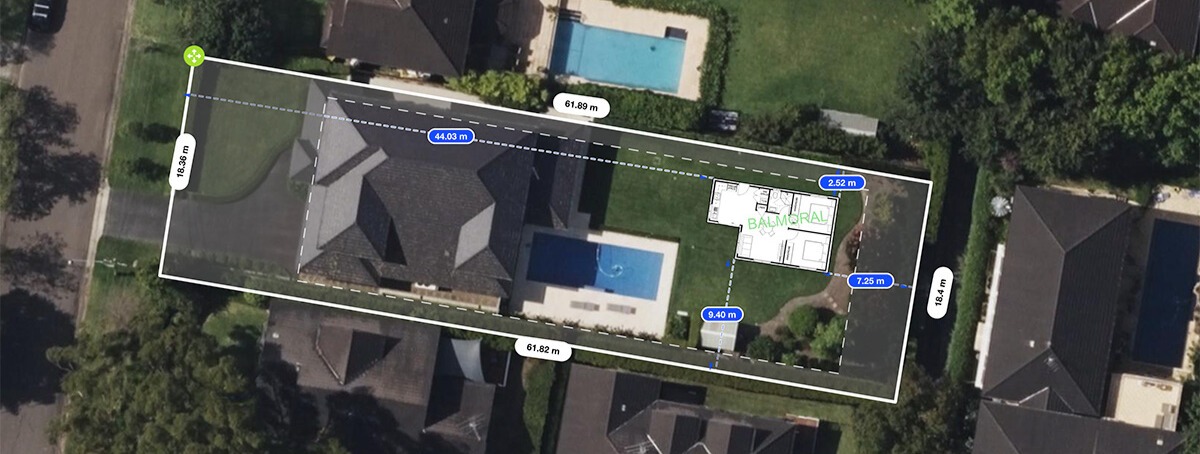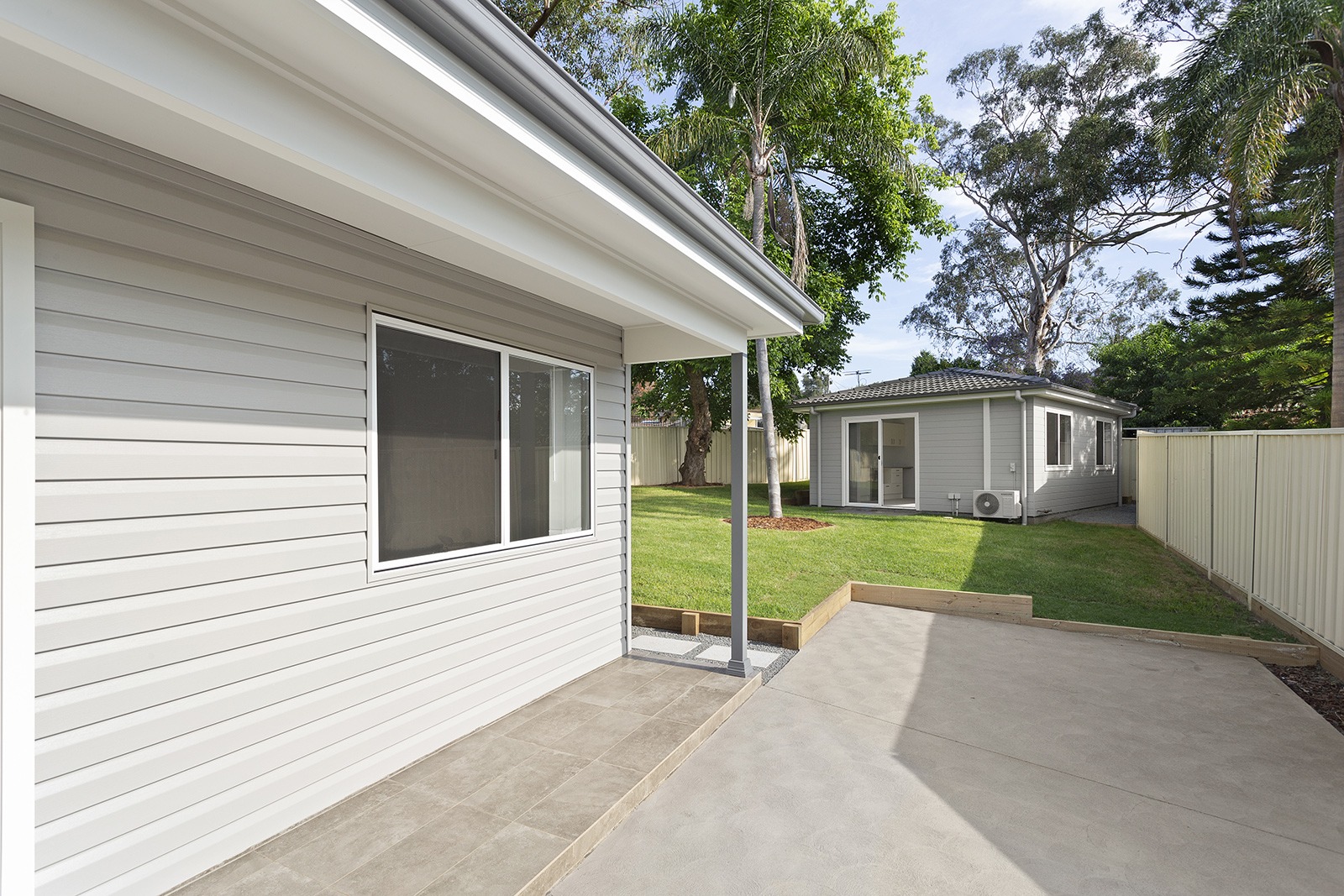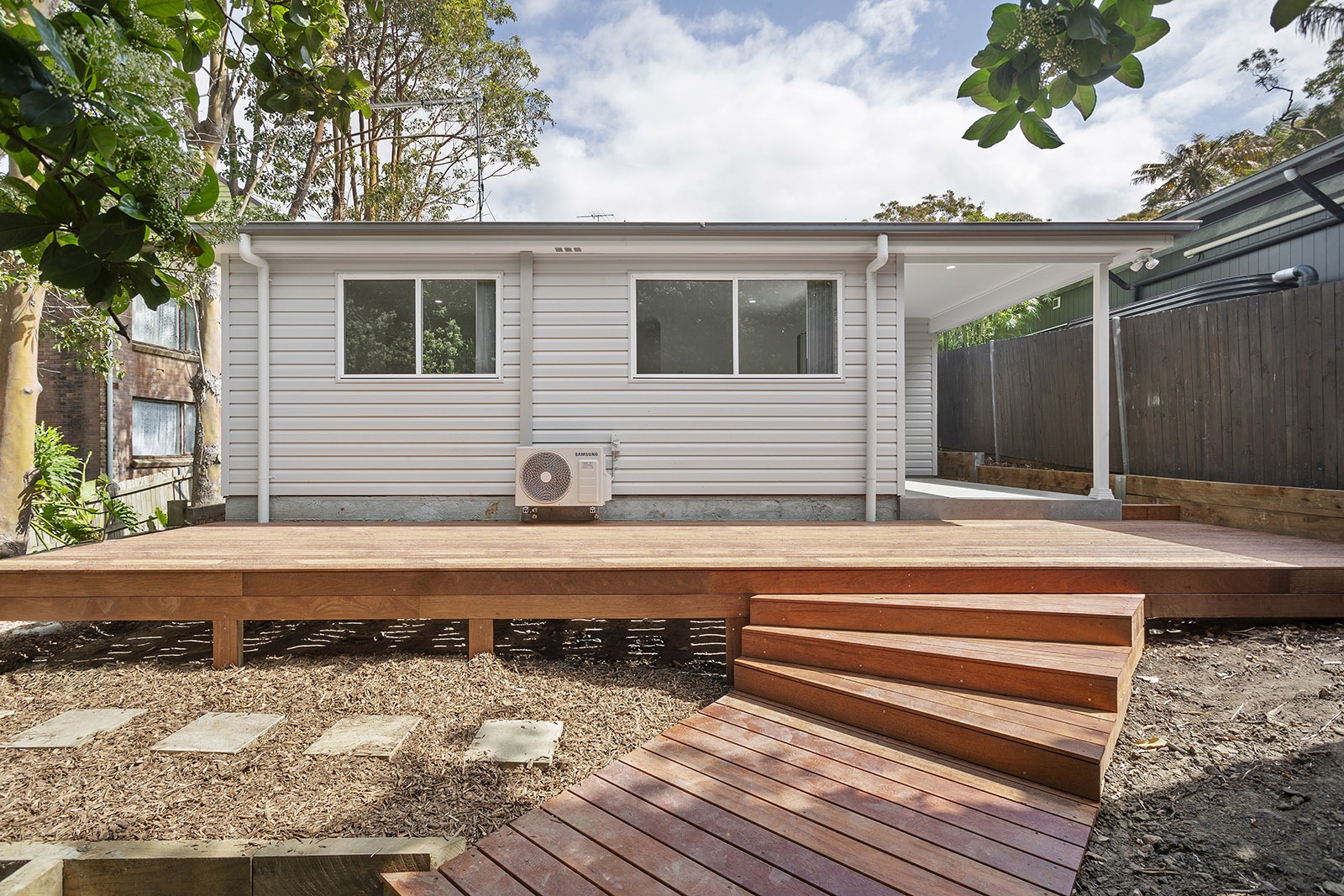



Get in touch
with us today…
Contact us for a private viewing to see a granny flat in your area today!

Employment Opportunities
We are always open to hiring motivated and creative workers who share our same passion to provide high-quality dwellings and attentive customer service.
If you are interested, please submit your details and resume.
How Your Region of NSW Influences Your Granny Flat Design

Granny Flats first gained popularity in the Central Coast and Sydney areas, but now they’re appearing across NSW, from coastal towns to rural bushlands.
They are being used for Granny, of course, for home offices, teenage retreats and craft studios. But it’s not just what you use it for that will determine the look and layout of your Granny Flat. Where you live in New South Wales can significantly impact the design and functionality of your Granny Flat. From climate considerations to lifestyle preferences, here’s how where you live in NSW influences Granny Flat design.
What is a Granny Flat?
A Granny Flat is a self-contained dwelling built on the same lot as a primary home. They can be built attached to the main dwelling or as a stand-alone structure but are limited in size, usually 60m2. No matter the property size, you can only have one Granny Flat on a block, and it must be built secondary to the main home.
They cannot be subdivided and sold off separately—they remain on the same block and title as the principal dwelling. In this way, they are different from duplexes which can have dual titles, or townhouses which may have a community title scheme where some property is shared.

Why do People in NSW Build Granny Flats?
Granny Flats are a great way to ease housing pressure by accommodating elderly family members and adult children who may struggle to find suitable rental accommodation or wish to be close to family members for support. Granny Flats can also be used to provide extra living space instead of extending or renovating a home, they increase property value in the eyes of future potential buyers, and they can be used to provide rental income when privately let, either short-term or long-term. Housing investors can also benefit from building Granny Flats to boost their rental income potential.
What to Consider During Your Granny Flat Project
1. Climate Considerations
Coastal Regions
High humidity and salty air are the two main considerations when designing a Granny Flat that can withstand the forces of nature on the coast. Using corrosion-resistant, high-quality materials and reinforcing structures to cope with high winds is essential. On the flip side, employing passive cooling techniques like cross ventilation can help save on running costs in the long run.
Inland Regions
Temperatures in inland regions can vary greatly. Therefore, good insulation and high-quality building materials that keep the dwelling at a stable temperature will increase property value and lower running costs. When building inland, you should also consider moisture control measures to cope with drier indoor air. Construction materials will vary depending on whether the home is in a bushfire-prone area but making your Granny Flat as durable as possible will add to its overall value.
Mountainous Regions
While mountainous regions have the benefit of wonderful views, they seldom have flat blocks of land to work with. Additional site requirements like excavation and retaining walls can add to the cost of Granny Flat construction, so bear this in mind when designing the dwelling and look for alternatives like pole homes where possible. High-altitude homes have to cope with harsh weather conditions so it pays to put a lot of thought into roof design to accommodate snow loads and ensure heating solutions are cost-effective.
2. Building Codes and Regulations
Local Council Requirements
The ease and speed with which you can build a Granny Flat depends on zoning regulations covering your property. In New South Wales, Granny Flats can be built in residential areas without council approval provided they adhere to complying development regulations under the State
Environmental Planning Policy. These rules cover restrictions on minimum size requirements and setbacks from the building line to the property boundary. If you are not eligible for a Complying Development Certificate, you can still build a Granny Flat with a Development Application with your local council.
In other zoning areas such as rural areas, development requirements are set under local environmental plans by individual councils. A Granny Flat development may also be subject to heritage or environmental overlays, so check with your local council before you begin the design process.
Failing to go through the approval process and seek the necessary approvals, even in a rural area, means your home may not comply with the building code and could be difficult to sell should you wish to. If you’re not sure where to start, seek professional advice from someone with experience building Granny Flats, like Granny Flat Solutions. We can deal with all the paperwork for you.
Bushfire and Flood Zones
Other planning controls that your Granny Flat may be subject to relate to specific local regulations for areas prone to natural disasters. For example, if you live in a bushfire-prone area, you may be required to remove existing trees from around the Granny Flat or advised to use fire-resistant building materials.
In flood-prone zones, you may be required to install flood-proofing measures or elevated foundations to mitigate the risk of floodwater entering the property.
3. Local Aesthetics and Architectural Style
Rural and Coastal Regions
Several factors will influence the style of your rural or coastal Granny Flat, but your proposed design should reflect where you live by taking influence from the natural landscape or the architectural style of the homes around yours.
In rural settings, natural materials and earthy tones can help your secondary property blend into the landscape, allowing occupants of both the main home and Granny Flat to enjoy the surrounding natural elements. In coastal regions, providing plenty of natural light and enough outdoor space are key no matter the intended use of the Granny Flat.

Urban and Suburban Regions
In built-up residential areas privacy and security are crucial components of a successful Granny Flat development. Incorporate a separate entrance and amenities wherever possible to future-proof your Granny Flat project.
Whether you choose a modern, contemporary exterior or something more suited to your region, efficient use of space is also a must-have feature in Granny Flat. You can never have too much storage in a home. An open-plan layout ensures enough functional space, whether you plan to use the secondary dwelling as a studio to work from home or rent to private tenants.
4. Lifestyle Preferences and Functionality
Retirement Living
Whether you’re designing your own granny flat or one for an elderly family member, accessibility features are an important aspect for retirement living to ensure the occupants can remain in the property for as long as possible. These provisions should be combined with low maintenance living spaces and landscaping. In rural and coastal regions, native gardens are a great low-maintenance garden solution.
Proximity to healthcare facilities also plays an important role in keeping elderly family members at home for as long as possible, so keep this in mind when building a Granny Flat on a rural property.
Intergenerational Living
Granny Flat designs with a layout that can accommodate different needs are a fantastic way to ensure the longevity of your investment. For example, what serves you as a home office now may house teenage children or elderly parents in the future.
Although your requirements may change, privacy considerations and soundproofing methods, as well as shared outdoor spaces are likely to remain important aspects of your Granny Flat no matter where in NSW you live.
Home Office or Studio
Whether it’s a home office in the inner city or an art and craft space in the bush, designing your Granny Flat with good natural light ensures it will meet its intended use with ease. Including infrastructure like high-speed internet in your dedicated workspace isn’t just critical for city slickers, it’s essential for keeping connected (and working from home!) Nowadays, be sure to provide for this in rural and regional NSW settings, too.
Frequently Asked Questions
What are the requirements for a Granny Flat in NSW?
Whether you live on the central coast or Sydney CBD, your property must meet certain requirements to accommodate a Granny Flat. If it does meet these requirements, you can go ahead and build without council approval. This type of development is done under what’s called a Complying Development Certificate. If it doesn’t meet these requirements, you can apply following the approval process of your local council using a Development Application. You can read about Granny Flat requirements for different NSW regions here.
What makes a good Granny Flat builder?
Building a Granny Flat is a significant investment, so you want to be sure you’re working with the best team to get the job done right. You want a Granny Flat builder with great communication from the initial consultation through the approval process and building a Granny Flat, one who will address issues promptly and help you work to a realistic budget. A good Granny Flat builder communicates clearly, resolves issues promptly, works within your budget, and uses high-quality materials to ensure lasting value.
Can I build a Granny Flat on my rural property NSW?
The rules for a secondary dwelling are straightforward if your property is zoned residential. However, a Granny Flat development on a rural property depends on local environmental plans set by your local council. In most cases, they are allowed, but you can check the rules of your local council area surrounding Granny Flats here.
Make the Most of Your NSW Backyard Today
Granny Flat Solutions is the Granny Flat builder of choice for residential and rural customers across NSW.
We’re a multi-award-winning Granny Flat builder with a vast range of designs to suit all your needs. Whether you’re considering an investment property or somewhere to home family members, call us on 1300 259 677 today to get started.
Ready to start your building journey? Chat to our team of experts today and get a FREE personalised quote
Find Out More
“Experience the difference for yourself.”
Call 02 9481 7443 or contact us online now to book your free site inspection and quote.







